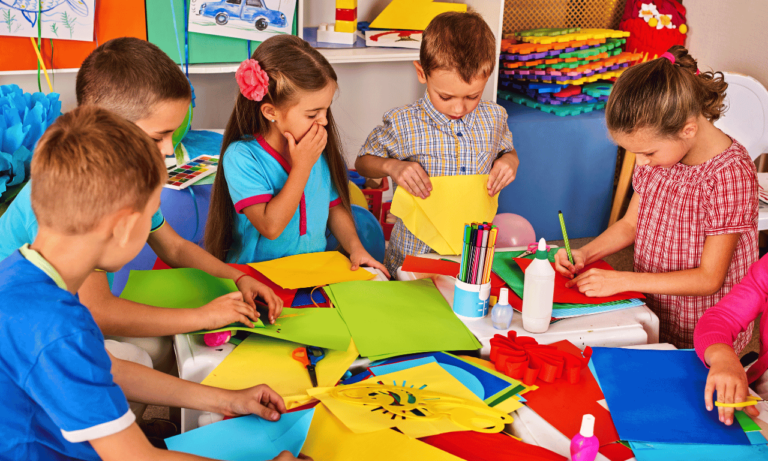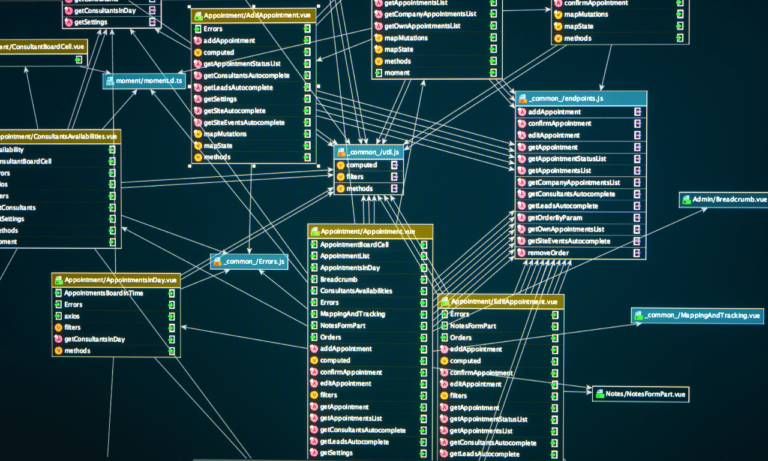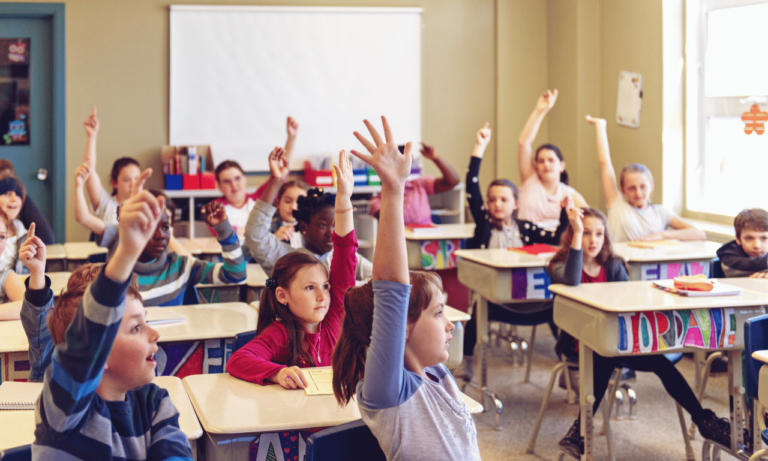Phone:
(+65)8319-0742
Amidst the educational landscape, effective teaching methods are always in demand, and one approach proving to be influential is the usage of metacognitive strategies in teaching. Pioneering a path towards enlightening students on how to learn, these strategies lay the groundwork for fostering advanced critical thinking skills and honing effective educational techniques. Metacognitive strategies empower learners to think about their own thinking, actively engaging with their cognitive processes to elevate their educational journey.
By encouraging students to ask their own reflective questions, metacognition places them at the helm of their learning, transforming them into capable navigators of their own minds. Whether analyzing their knowledge base, examining their approach to problem-solving, or setting goals for future learning, metacognition instills a sense of ownership and proficiency in their pursuit of knowledge. Furthermore, when these strategies are applied, learning becomes a more dynamic and interactive experience, transcending the boundaries of rote memorization and paving the way for a fuller and more robust understanding of the material.
Key Takeaways
- Metacognition improves self-awareness and problem-solving in students.
- Reflective questioning can drive students towards greater academic independence.
- Metacognitive strategies surpass rote learning for deeper material engagement.
- Effective teaching incorporates metacognitive practices for skill development.
- Critical thinking is elevated through active usage of metacognitive techniques.
Understanding Metacognition in Education
The journey toward a more enlightened educational approach invariably passes through the concept of metacognition. By fostering an environment where metacognitive awareness is ingrained in the teaching strategies, educators can significantly enhance the cognitive learning process and bolster student engagement. But what exactly is metacognition, and how does it transform the learning experience? Let’s delve deeply into understanding this vital educational tool.
Defining the Concept of Metacognition
At its core, metacognition is the heightened level of self-awareness regarding one’s own thought processes. It’s about being aware of how one thinks, learns, and solves problems. Metacognitive awareness posits that students must not only learn information but also learn ‘how’ they learn best. By evaluating their learning strategies and cognitive strengths, students can adapt their approach for better outcomes.
The Science Behind Effective Learning through Metacognition
Neuroscientific research validates the transformative power of metacognition in the learning process. When students actively reflect on and manage their learning tactics, they engage deeper cognitive functions that are critical for long-term knowledge retention and emotional intelligence. As a consequence, the cognitive learning process is optimized, laying a solid foundation for advanced learning abilities.
How Metacognitive Awareness Transforms Learning Outcomes
Developing metacognitive awareness is a game-changer for educational outcomes. Emphasizing not just the knowledge but the understanding and application of this knowledge ensures that students engage thoroughly with the curriculum. This self-regulatory mechanism plays a significant role in tailoring personalized learning experiences that are more engaging and effective.
Let’s illustrate the practical significance of incorporating metacognitive strategies into oneâs teaching repertoire:
| Teaching Strategy | Metacognitive Component | Impact on Learning |
|---|---|---|
| Self-assessment Quizzes | Students evaluate their understanding. | Identifies knowledge gaps. |
| Interactive Discussions | Learners articulate thoughts and reasoning. | Promotes critical thinking and engagement. |
| Reflective Journals | Documenting learning experiences and emotional responses. | Encourages deeper connection with material and self-awareness. |
Incorporating metacognitive awareness in the classroom not only aids the cognitive learning process but also empowers students. It helps to cultivate skills that far transcend the walls of the school, preparing learners not just academically, but for the complexities of real-life scenarios, thereby promoting comprehensive student engagement.
Metacognitive Strategies in Teaching

Incorporating metacognitive strategies into classroom instruction not only fosters academic success but also equips students with invaluable critical thinking skills. These teaching strategies prepare students for a constantly evolving academic landscape and nurture life-long learners.
Integrating Metacognitive Practices into Curriculum
One key aspect of curriculum design should be the inclusion of reflective activities that encourage students to consider prior knowledge, set concrete learning objectives, and evaluate their progress. This intentional incorporation paves the way for students to take control of their educational outcomes, making learning a more personalized and meaningful experience.
Developing Metacognitive Skills in Students for Academic Success
By designing challenges that are appropriate to students’ skill levels, educators can stimulate the kind of engagement that leads to growth in metacognitive competence. It is critical that these teaching strategies are explicit, enabling students to consciously reflect and apply various learning strategies to their study routines.
Critical Thinking and Problem Solving through Metacognition
Critical thinking and problem-solving are cornerstone skills for lifelong learning, and metacognition is the tool that sharpens these skills. As students engage in learning that incorporates metacognitive practices, they become adept at analyzing situations, organizing their thoughts, and making informed decisions, thus laying a firm foundation for future academic success and personal growth.
Practical Applications: Enhancing Cognitive Learning

Improving cognitive learning isn’t confined to just pedagogical theories; it manifests through actionable strategies in the modern classroom. Below, we delve into the three stages of class interaction â pre-class, in-class, and post-class â each equipped with targeted approaches that underscore the importance of student engagement, active learning techniques, knowledge retention, and cognitive learning.
Pre-class Strategies for Engagement
Before the classroom lights even flicker on, educators have a golden window to set the stage for active learning. Pre-class activities are designed to ignite curiosity and prepare the mind for new concepts. Initial engagement might include pre-reading assignments paired with reactionary blogs that allow students to contemplate and assimilate prior knowledge with incoming information. This proactive stance not only primes them for upcoming lessons but also puises their cognitive faculties, making them receptive to the day’s objective.
Active Learning Techniques During Class
With the foundation set, the in-class phase is where the cognitive gears shift into high drive. Active learning techniques are the pistons in this engine, facilitating a learning environment where ideas can be aired, tested, and transformed. Strategy deployment ranges from interactive discussions to hands-on projects, all structured to foster student engagement and autonomy in the educational discourse. Techniques like role-playing or case study analyses are not just engaging exercises but also deepen cognitive connections being forged in real-time.
Post-Class Reflection for Knowledge Retention
As the class concludes, the spotlight shines on knowledge retention. Post-class activities aim to cement the day’s learnings with reflective exercises that encourage students to internalize and articulate their understanding. Structured reflection exercises, journaling, and follow-up discussions are imperative conduits in translating temporary data intake into long-term knowledge storage. This three-stage cyclical approach underscores the journey from student engagement to deep cognitive learning, creating an enduring impact on the educational experience.
A crucial aspect of enforcing these methodologies is monitoring and adjusting them to suit individual and class needs. Hence, educators are encouraged to employ diverse strategies and conduct regular checks to gauge their efficacy. Let’s consider how these methods shape up practically:
| Phase | Techniques | Expected Outcomes |
|---|---|---|
| Pre-Class | Pre-assessments, Previewing Content | Baseline knowledge established, Interest in new topics piqued |
| In-Class | Think-Pair-Share, Problem-Solving Exercises | Enhanced engagement and cognitive participation |
| Post-Class | Reflective Essays, Group Discussions | Improved knowledge retention and concept consolidation |
In conclusion, employing these pedagogical frames not only equips students with immediate learning benefits but also imbues them with skills that transcend classrooms and burgeon into lifelong learning traits.
Leveraging Metacognitive Tools for Educational Success

In the pursuit of educational success, metacognitive tools play a pivotal role in equipping students to become skilled learners. These tools stretch beyond traditional teaching materials, inviting active engagement and fostering the ability to adapt learning techniques to fit various scenarios. The integration of metacognitive tools within teaching strategies allows educators to address diverse learning needs and promote a higher level of thought processing within their students.
Effective teaching methods that incorporate metacognitive elements not only aid in the immediate academic context but also prepare students for lifelong learning. Some of the key techniques that stand out for their impact on learning include close reading exercises and the use of graphic organizers. Close reading, for instance, moves readers beyond basic comprehension and toward a nuanced analysis of texts. By engaging in such practices, students note and compare reading strategies to enhance understanding and retention of the material.
- Graphic Organizers for Visualizing Information
- Strategic Questioning to Spark Critical Thinking
- Self-Assessment Techniques for Monitoring Progress
- Reflection and Journaling to Make Learning Personal
Such teaching strategies are designed to engender proactive planning, continual monitoring of progress, and evaluative thinking about one’s learning process. Educational success is thereby not seen as a passive acquisition of knowledge but as an active, self-directed journey.
Moreover, it’s imperative that educators craft their approaches to be adaptable to a spectrum of learnersâfrom those who internalize metacognitive practices tacitly to those who require a more reflective learning process. Investing in teacher training on metacognitive methods promises a sustainable and cost-effective enhancement to teaching and learning.
Ultimately, such metacognitive strategies underline the importance of empowering students with the skills necessary to transfer and apply their knowledge across different tasks and contexts, setting the foundation for lifelong educational achievements.
Empowering Students with Self-Awareness and Educational Techniques
At the core of enhancing student success is fostering self-awareness in learning, a crucial aspect of developing independent and reflective learners. Through the adoption of metacognitive strategies in teaching, educators can guide students to recognize and regulate their own thought processes, ultimately creating a path to educational success that is both self-directed and deeply personal.
Metacognition facilitates an environment where students are encouraged to understand the ‘how’ and ‘why’ of their learning. Knowing which educational techniques work best for them allows students to replicate those strategies for efficient learning experiences. It’s about creating a personalized toolkit for academic triumph, with each tool carefully selected through the process of self-reflection.
By weaving together educational techniques that foster self-awareness, educators can prompt students to contemplate their learning journey. This helps them to identify specific areas of strength and weakness, decide when to change tactics, and appreciate the value of their educational progress. Such techniques may include:
- Regular self-assessment check-ins to encourage reflection on learning objectives and outcomes.
- Learning logs or diaries to track thoughts, feelings, and progress over time, fortifying self-awareness in learning.
- Peer feedback sessions to provide alternative perspectives and encourage metacognitive conversations.
- Goal-setting exercises linked to personal aspirations and academic targets.
These approaches yield learners who not only excel academically but also carry with them an intrinsic motivation to learn. They become capable of adapting to new and challenging scenarios in education and beyond, equipped with the right metacognitive strategies to navigate their way to success.
In essence, nurturing self-awareness through tailored educational techniques and metacognitive strategies in teaching is paramount. It underpins the ability of students to introspect, adapt, and excel, thereby framing a scaffold for lifelong learning and ongoing student success.
Conclusion
In the dynamic arena of education, implementing metacognitive strategies in teaching is more than a mere enhancement; itâs a transformative movement towards cultivating cognitive learning and nurturing critical thinking skills. Students become architects of their learning experiences, charting paths that are as varied as they are effective. By fostering an environment where learners regularly engage in self-assessment and strategy adjustment, they not only become more involved but also more invested in their educational journey. The clear advantages such practices bring to the table can no longer be overlooked by educators or institutions seeking to elevate the caliber of their pedagogy.
As the educational fabric evolves to include these reflective approaches, student engagement becomes less about passive reception and more about active discovery. The tools that metacognition provides help mold students into resilient learners, ready to face the ebb and flow of academic challenges with a profound sense of preparedness and adaptability. This is not a quick fix but a robust process, cultivating scholars capable of thinking critically and persistently questioning the status quo of their understanding and methodologies.
Ultimately, the integration of thoughtful, metacognitive frameworks within curricula is key to unlocking the latent potential within each student. As they grow more self-aware and equipped with mechanisms to maneuver through complex educational terrains, the future of learning looks brighter than ever. Thus, the commitment to a metacognitively rich approach to instruction stands as a cornerstone in shaping the educational experiences of tomorrow, ensuring that today’s learners are not just informed but also intuitively insightful and strategically savvy.
FAQ
What Are Metacognitive Strategies in Teaching?
Metacognitive strategies in teaching involve instructing students on how to think about their own thought processes, understand their cognitive strengths and weaknesses, and apply this knowledge to learn more effectively. These strategies include self-assessment, goal-setting, monitoring understanding, adjusting approaches, and reflecting on what they have learned.
How Do Metacognitive Strategies Enhance Critical Thinking Skills?
By applying metacognitive strategies, students learn to evaluate their thinking patterns, which helps them develop a deeper understanding of the material. This reflective process promotes critical thinking as students assess the efficacy of their learning strategies and make adjustments, leading to improved problem-solving skills.
What is the Role of Metacognitive Awareness in Education?
Metacognitive awareness refers to being aware of and understanding one’s own thought processes. In education, it transforms learning outcomes by empowering students to self-regulate their learning, plan and monitor their progress, and evaluate the success of their applied strategies, leading to more effective learning and academic success.
How Can Educators Integrate Metacognitive Practices into Curriculum?
Educators can integrate metacognitive practices by designing activities that promote reflection, such as journals or discussions about learning strategies and outcomes. They can also teach specific metacognitive strategies and encourage students to monitor and adjust their learning approaches based on their reflection.
What Are Some Active Learning Techniques That Promote Metacognition?
Active learning techniques that promote metacognition include think-pair-share, guided problem-solving, role-playing, and debate. These activities require students to think critically, reflect on their learning, and discuss strategies with peers, enhancing engagement and metacognitive skills.
Why Is It Important for Students to Reflect After Class?
Reflecting after class is crucial for students to consolidate their knowledge, understand which learning strategies were successful, identify areas for improvement, and apply these insights to future learning tasks. It facilitates knowledge retention and helps students become more self-directed learners.
How Do Metacognitive Tools Contribute to Educational Success?
Metacognitive tools, such as graphic organizers, reflection prompts, and strategic questioning, help students organize their thoughts, assess their understanding, and stay engaged with the learning material. These tools contribute to educational success by making learning more efficient and effective.
What Educational Techniques Foster Self-Awareness in Students?
Educational techniques that foster self-awareness include self-evaluations, peer reviews, and reflective writing. These techniques encourage students to consider their learning preferences, strengths, and challenges, enabling them to take ownership of their educational journey.

















